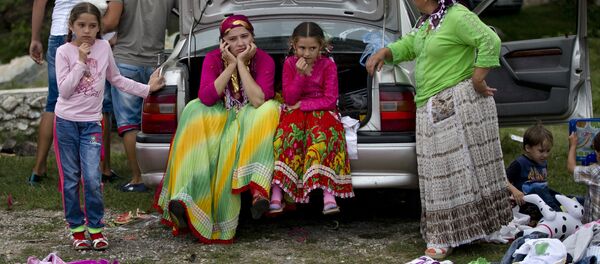"We're sorry if our mistake has upset or hurt people," the shopkeeper told Swedish national broadcaster SVT.
The swastika, which is still quite common in India, Japan and other parts of Asia due to its use by ancient religions, became one of the world's most hated symbols after the rise of Nazism in the mid-20th century. According to David Dunér, a professor of ideas and a researcher of cognitive semiotics at Lund University, it is not uncommon for Westerners to react negatively to seeing the swastika. According to him, though, the discussion about the swastika is typical of our time.
"We look at how symbols are used today, and today the interpretation of the swastika is dominated by its association with Nazism, not as an Indian sun symbol," David Dunér told SVT. The word 'swastika' is derived from Sanskrit and the symbol is associated with good fortune in Hinduism.
"Symbols are based on habit, and they can also change. Because we have a multicultural society, we tend to interpret certain symbols in different ways. Not everyone interprets the swastika as a Nazi symbol, although I think it's the most common association we get," Dunér said.
In today's Sweden, a public display of the swastika may fall under the law against fomentation of ethnic hatred. In the 2000s, the EU's attempts to ban the swastika as part of a wider anti-racism law failed largely due vocal opposition from Hindu groups, who advocated that it had been around for several thousand years as a symbol of peace.
Although uncommon today, the swastika was not infrequent in Scandinavia. In Sweden, the swastika was long used as a logo for the ASEA electrical engineering company, which today is part of the Swedish-Swiss group ABB.
Här pryder ASEA sitt elskåp? med en Svastika pic.twitter.com/DnNz1iTdAY
— Johannes Krilon (@JKrilon) November 23, 2013
The world-known Danish brewery Carlsberg Group used the swastika from the 19th century until the middle of the 1930s, when it was dropped to avoid Nazi overtones. The swastika is still seen carved on elephants at the gate of the company's headquarters in Copenhagen.
CARLSBERG BEER,
— REX (@REXtoday) July 8, 2016
with eternal Good Luck symbol.#SWASTIKA pic.twitter.com/1FivnWKbQC
In Finland, the swastika was used as the Finnish Air Force insignia between 1918 and 1945 and can still be seen on the flag of the Finnish Air Force Academy.
.@suski_kaukinen #Puolustusvoimat on, mutta #Ilmavoimat ei ole koskaan siitä #Svastika'sta luopunutkaan. pic.twitter.com/738kzm5rMd
— asiamies (@asiamies1) February 5, 2016
Never miss a story again — sign up to our Telegram channel and we'll keep you up to speed!




